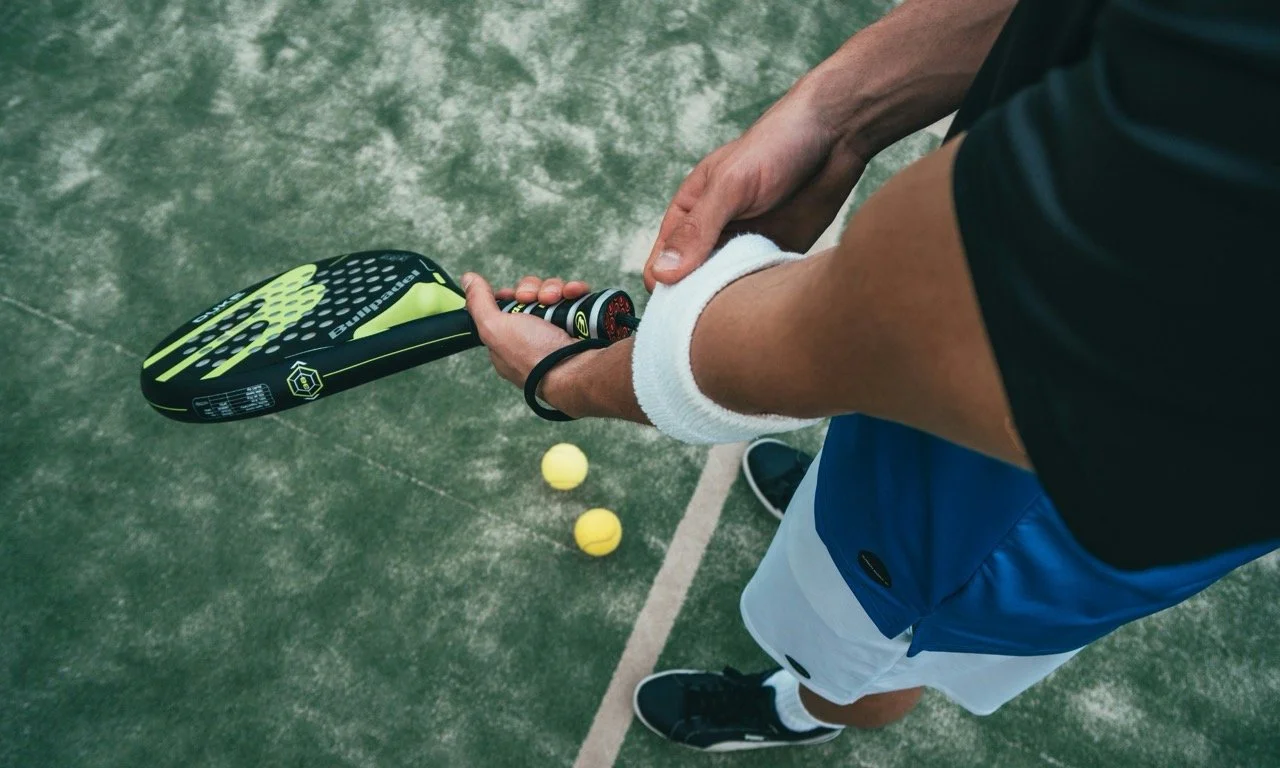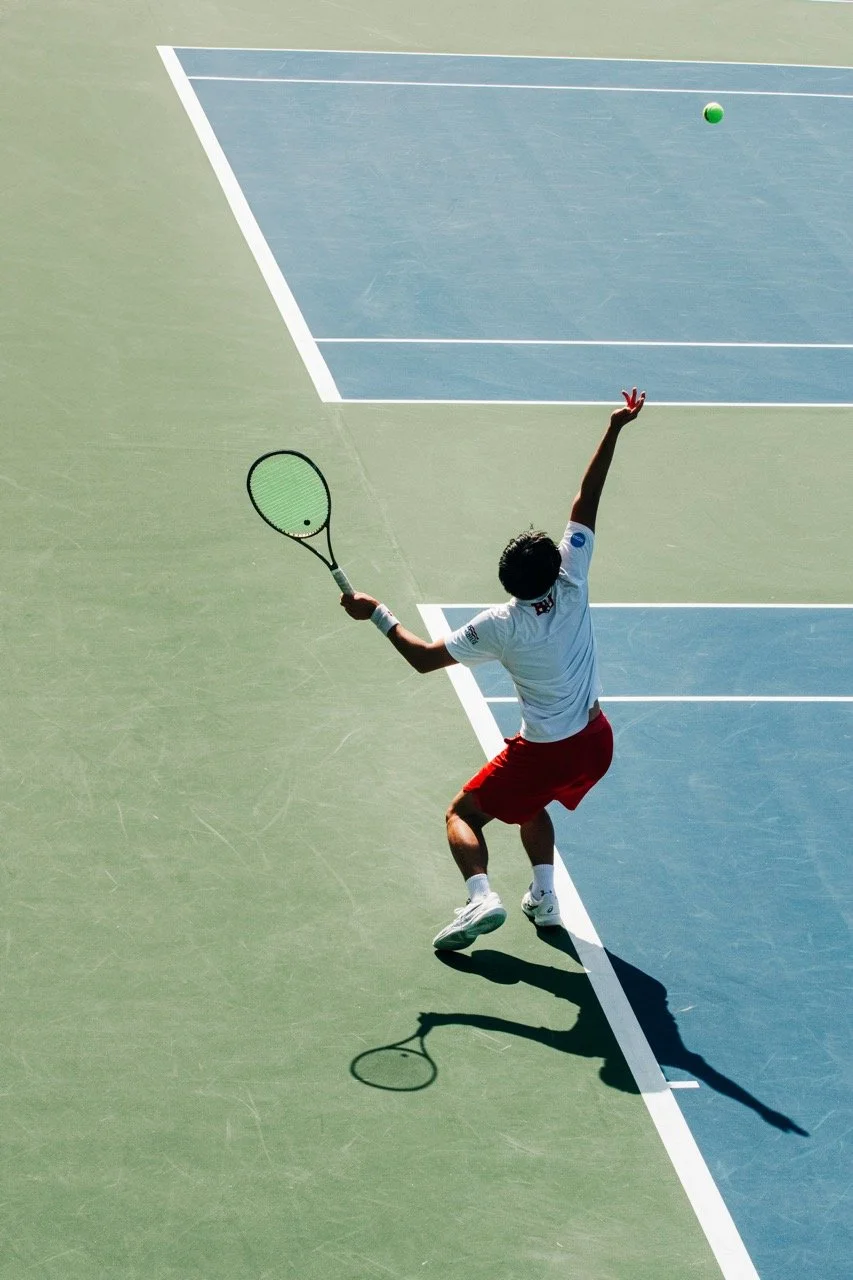Tennis Elbow Toolkit: Combining Chiropractic, Soft Tissue & BFR for Lasting Relief
When Your Swing Starts to Hurt
Tennis elbow (or lateral epicondylitis) isn’t just a problem for tennis players.
Pickleball enthusiasts, weightlifters, and even weekend warriors often find themselves sidelined by this nagging soreness. It usually starts subtly…pain when gripping, lifting, or forearm rotation. Over time, the pain lingers, making even simple forearm movements uncomfortable.
Power Performance Chiropractic (PPC) takes a modern, well-rounded approach to recovery. Treatment of tennis elbow often includes chiropractic adjustments, soft tissue therapy, and Blood Flow Restriction (BFR) training to rebuild strength safely and effectively.
Don’t let elbow pain keep you off the court, out of the gym, or away from the activities you love.
In this blog, we’ll share Dr. Chandler’s practical solutions and a clear recovery roadmap. Keep reading to learn more about running injury treatment and sign up for our mailing list for more expert insights, recovery tips, and performance hacks straight from your trusted running injury chiropractor in Bend, Oregon.
What Is Tennis Elbow, Really?
Tennis elbow, medically known as lateral epicondylitis, is not actually acute inflammation.
Instead, it’s a degenerative tendinopathy: a gradual breakdown of the tendon fibers on the outer elbow caused by repetitive stress over time.
Symptoms often include:
Pain or tenderness on the outside of the elbow
Discomfort when gripping objects, lifting, or rotating the forearm
Stiffness that lingers even after activity
While it can flare during tennis or pickleball, weightlifting, or everyday tasks, the root cause is often repetitive gripping, poor mechanics, and overload.
Traditional approaches like rest, ice, and bracing may provide temporary relief but rarely address the underlying dysfunction. Without targeted intervention, the tendon remains vulnerable, and pain can persist longer than it’s welcomed.
Effective recovery requires functional, targeted approaches like soft tissue therapy and blood flow restriction therapy from an elbow pain chiropractor specializing in tennis elbow treatment. Together, chiropractic and soft tissue treatment are the best rehab for tennis elbow.
Manual Adjustments: Realigning the Kinetic Chain
Tennis elbow pain doesn’t exist in isolation.
Often, joint dysfunction in the wrist, elbow, shoulder, or even cervical spine can contribute to faulty movement because these issues can alter how forces travel through the arm. These subtle misalignments can make gripping, lifting, or swinging significantly more stressful on the elbow.
Manual chiropractic adjustments and instrument-assisted techniques target these restricted joints to restore proper motion. By improving mobility in the wrist, elbow, and shoulder, adjustments help the body distribute forces more efficiently during movement. This reduces unnecessary tension and strain on the injured tendon, allowing it to heal under safer loading conditions.
The benefit goes beyond immediate pain relief.
Restoring proper function supports healthier movement patterns throughout daily and athletic activities, decreasing the likelihood of recurrence. It isn’t just about elbow pain, it’s about fixing the way the whole chain moves.
Active Release Technique: Breaking Up the Bad Tissue
Active Release Technique (ART) is a hands-on therapy that targets muscle adhesions and nerve entrapments that limit movement and cause pain. Unlike general massage, which primarily relaxes muscles, ART addresses soft tissue dysfunctions with intent, including muscles, tendons, ligaments, fascia, and nerves.
During an ART session, a certified practitioner first assesses the affected area to pinpoint and evaluate restricted tissue. With their hands, ART practitioners apply a combination of precise pressure and guided movement, moving the patient’s body through specific ranges of motion while working directly on the adhesion. This process helps with musculoskeletal disorders, overuse syndromes, chronic pain, and scar tissue.
What sets ART apart is its specificity and real-time results.
The practitioner can feel restrictions under their hands and adjust techniques accordingly, while the patient actively participates in the movement, ensuring that the release is effective and lasting. Many patients notice improvements immediately, whether it’s increased flexibility, reduced pain, or improved range of motion.
Blood Flow Restriction (BFR) Training: Strength Without Strain
Blood Flow Restriction (BFR) training is an innovative rehabilitation technique that allows athletes to gain strength without overloading healing tissues.
Using specialized bands or cuffs, blood flow to the working muscle is partially restricted, creating a high-metabolic-stress environment even with very low-load exercises. This combination stimulates muscle growth, tendon adaptation, and vascular remodeling while keeping joint and tendon strain minimal, perfect for conditions like tennis elbow.
BFR provides several key benefits for sufferers of tennis elbow specifically.
It builds forearm and grip strength safely, promoting endurance for racket sports and lifting tasks. The restricted blood flow encourages vascular responses in the tendon, supporting tendon remodeling and tissue recovery. Over time, this helps restore tendon resilience, improving endurance for grip-based sports.
A typical BFR protocol for tennis elbow might involve low-resistance grip exercises or isometric holds performed in multiple short sets, 2–3 times per week. Sessions usually last 15–20 minutes, emphasizing controlled movement and proper technique. Most patients notice improvement within 4–6 weeks, often accompanied by reduced pain.
Typical Recovery Timeline & What to Expect at PPC
At PPC, tennis elbow recovery is structured into clear, progressive phases tailored to each patient. Here’s what to expect for a tennis elbow recovery timeline.
Phase 1 (2–3 weeks):
The focus is on pain reduction. Patients receive targeted chiropractic adjustments and ART to relieve tension and decompress the tendon.
Phase 2 (3–6 weeks):
Rehab during this phase emphasizes tissue remodeling and early tendon loading. BFR training is then introduced to safely build forearm strength and promote tendon adaptation without overloading the injured area.
Phase 3 (6–10 weeks):
The final stage prepares patients for a full return to play, with sport-specific exercises, mobility drills, and strength training.
Throughout the process, every patient benefits from 1-on-1 care with a customized plan that considers their activity level, goals, and timeline. Consistent home exercises and coaching are integrated into treatment to ensure progress continues between sessions, giving patients the tools to heal effectively and prevent recurrence.
Why Choose Power Performance Chiropractic for Elbow Rehab?
PPC offers a full-spectrum approach to elbow rehab, combining chiropractic adjustments, targeted soft tissue therapy, and performance-focused rehabilitation. This comprehensive model addresses not just pain, but the underlying mechanics and root issues that contribute to conditions like tennis elbow.
PPC stands out as one of the few clinics in Bend offering advanced modalities such as Blood Flow Restriction (BFR) training and WinBack Tecar Therapy, an advanced recovery treatment that harnesses the power of TECAR (Transfer of Energy Capacitive and Resistive) technology to help active bodies heal faster, move better, and stay in the game safely and naturally.
Dr. Chandler’s extensive background in sports chiropractic also equips him to treat athletes and active adults of all levels with precision and insight. With a deep-rooted passion for athletics, he is committed to helping all athletes enhance their performance with first-rate, advanced treatments, whether your sport is golf, weightlifting, running recovery, pickleball, or other activities.
His goal is to empower patients to move better, feel better, and achieve their highest potential.
At PPC, patients don’t just heal. They regain strength, restore mechanics, and return to activity with confidence. It’s athlete-first care that helps you recover and come back stronger.
It’s Time to Get a Grip on Your Recovery
It’s time to get a grip on tennis elbow.
The pain can be frustrating and persistent, but it doesn’t have to linger. With a proactive and comprehensive approach, lasting recovery is within reach.
At PPD, Dr. Chandler combines chiropractic care, ART, and BFR training to relieve pain, restore function, and build strength where it matters most. This three-part strategy is the best way how to treat tennis elbow in Bend, Oregon.
Schedule your assessment today with Bend’s go-to sports chiropractor and start your path toward stronger, pain-free performance.


